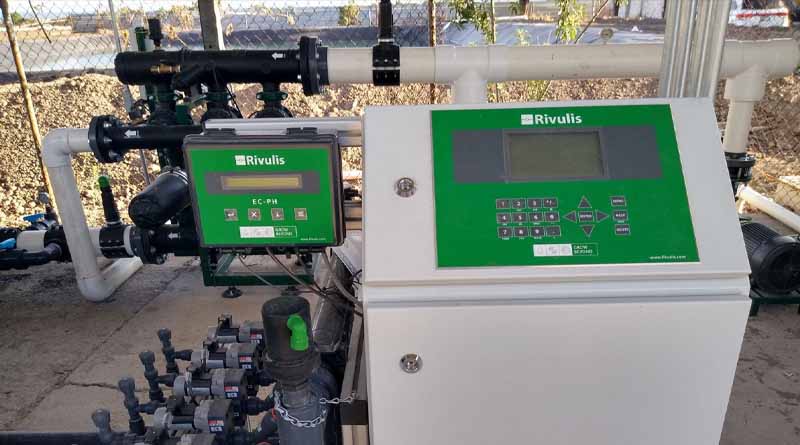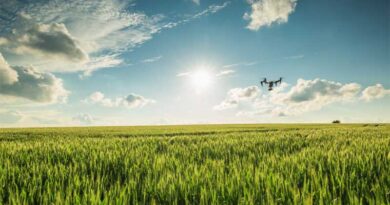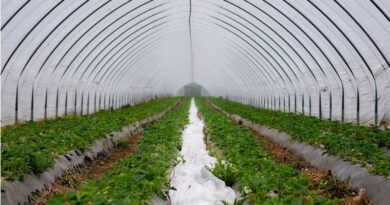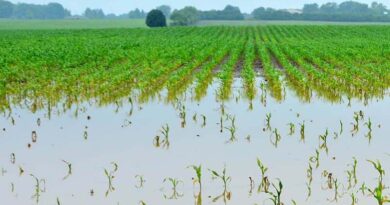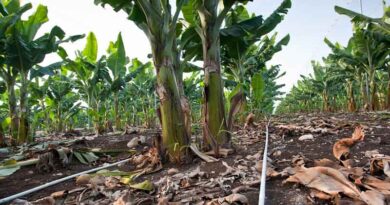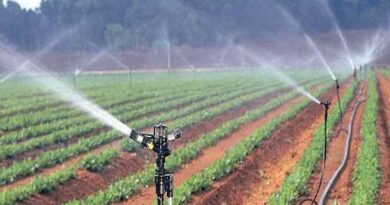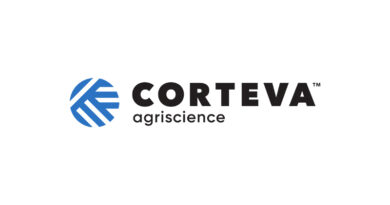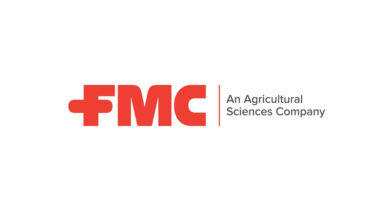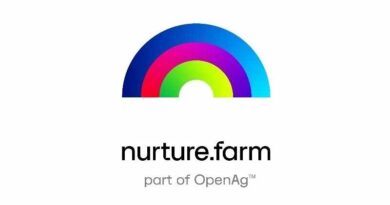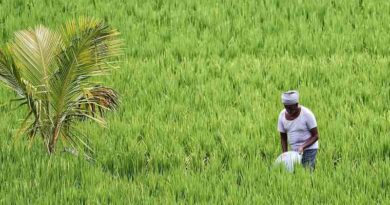What is an Irrigation System? Introduction to Irrigation Systems
03 August 2023, US: irrigation is the artificial application of water to the soil through various systems of tubes, pumps, and sprays. Irrigation is usually used when natural water sources and rain are not sufficient to provide plant water demand and in areas where rainfall is irregular or dry times or drought is expected. There are many types of irrigation systems. in some, water is supplied to the entire field uniformly. In others, water is applied specifically to the designated root zone via drippers.
Water source and management
Irrigation water can come from groundwater, springs or wells, surface water, rivers, lakes, or reservoirs, or even other sources, such as treated wastewater or desalinated water.
It is critical that farmers protect their water sources and minimize the potential for overuse and contamination. As with any groundwater removal, users of irrigation water need to be careful not to pump groundwater out of an aquifer faster than it is being recharged.
Food security
With a growing population around the world and growing demand for food, the farming industry must be able to meet those demands. Without irrigation, this seems impossible. To ensure food security, farmers have to adopt the latest and most advanced technologies, namely irrigation and fertigation.
Types of Irrigation Systems
Surface Irrigation Systems
Surface irrigation, also referred to as flood irrigation or furrow irrigation is the traditional method, involving the distribution of water over the soil surface using gravity. This method is further divided into three subcategories: furrow irrigation, border irrigation, and basin irrigation. In order to consider this method of irrigation, the field or plot has to be surfaced and leveled. Therefore, many sites are not suitable to be irrigated with this method. The extremely low water use efficiency of flood irrigation is only matched by its low cost. Flooding or furrow irrigation tends to bring the crop to extremities. When flooded, the field gets saturated. Anoxia conditions are often formed, and heavy leaching of water and nutrients occurs.
Overhead or Sprinkler Irrigation Systems
A sprinkler irrigation system allows the application of water under high pressure with the help of a pump. It releases water-like rainfall through small-diameter nozzles placed in the pipes. Water is distributed through a system of pipes and sprayed into the air.
In the case of impact sprinklers, for good uniformity, several sprinklers must be operated together so that their patterns overlap. Each emitter has a unique wetting pattern. This determines the specific spacing between sprinklers to achieve the best uniformity.
There are a few kinds of sprinkler irrigation methods and emitters. Central pivot, impact sprinklers, and more.
A central pivot irrigation system is a mechanized, pressurized irrigation system. The original and most used style of pivot irrigation applies water in a circular pattern, pivoting around a central point in the middle of the field. A pivot system consists of a lateral, stainless-steel pipeline mounted across adjacent, mobile truss structures that support the pipe. Sprinkler nozzles are installed along the pipeline or hang down from the lateral pipe on smaller pipes or cables.
A lateral pivot system is similar to a traditional center pivot system. However, a lateral move machine moves in a straight line rather than a pivot, allowing for better coverage in a square or rectangular field. Lateral move irrigation systems are also more labor-intensive through the growing season than traditional center pivot systems.
Drip Irrigation Systems
Drip irrigation is a type of micro-irrigation system in which water is emitted directly into the soil through a network of pipes and emitters. Compared to other irrigation methods, drip irrigation is highly efficient if properly designed, installed, operated, and maintained/managed.
Drip irrigation systems consist of various components channeling water from its source: pump or pressurized water source, water filters, controller, pressure control valve, distribution lines, meters, and gouges, hand-operated or electronic control block valves, tubes, fittings, and accessories, emitting devices, and chemical injectors. Drip irrigation reduces water losses to evaporation or runoff by providing more targeted and efficient irrigation. This results in increased water conservation and improved overall plant health and growth.
Drip irrigation is also ideal for delivering nutrients directly to the root zone. This method is called fertigation. This is probably the most efficient way of fertilizing crops when it comes to precision and uptake efficiency.
Subsurface drip irrigation Systems
Subsurface drip irrigation (SDI) is a low-pressure, high efficiency irrigation system that uses buried drip tubes or drip tape to meet crop water needs. A subsurface drip irrigation system is flexible and can provide frequent light irrigations. This is especially suitable for arid, semi-arid, hot, and windy areas with limited water supply, but also for any soil type or terrain. With a well-maintained system, water application is highly uniform and efficient. Wetting occurs around the tube, and water typically moves out in all directions in specific patterns depending on soil characteristics and other factors. Subsurface irrigation saves water and improves yields by minimizing surface water evaporation and reducing the incidence of weeds and disease. Water is applied directly to the root zone of the crop and not to the soil surface, where most weed seeds germinate after cultivation. As a result, germination of annual weed seeds is greatly reduced. When managed properly with a fertilizer injector, water and fertilizer application efficiencies are enhanced, and labor needs are reduced. Field operations are also possible, even when irrigation is applied.
Main Factors to Consider When Selecting an Irrigation System
Soil type
Soil type is one of the major considerations when it comes to selecting the right irrigation method. Since soil characteristics, like texture and structure, will determine the water distribution within the soil, the right irrigation method needs to be adjusted accordingly. In heavy soils where capillary movement is strong, drip irrigation might be the optimal solution. In other cases, like very light soil, sprinkler irrigation might be a better fit due to its high-water distribution uniformity.
Crop requirements
Naturally, the specific requirements of the crop are a basic guideline for whatever comes next. According to specific crop needs, the irrigation system will be designed. If the water demand is expected to be high, the system will need to be able to meet the demand. Depending on water availability and other factors, flow rates and pressure will be determined. Drip irrigation will supply water with lower pressure and lower flow rates as opposed to sprinklers for example. If there is a need for cooling and climate control, an overhead sprinkler irrigation system will be the preferred choice.
Climate and weather conditions
Climate and weather conditions go a long way when it comes to choosing your irrigation method. Windy conditions, for example, will scratch sprinkler irrigation off the table for example. Their distribution uniformity is compromised under these conditions. Under windy conditions, drip irrigation has a distinct advantage. Evaporation and high temperatures, on the other hand, will sometimes necessitate the use of sprinklers for a higher application rate and climate control respectively.
Land Topography
As mentioned above, some irrigation methods are suitable for very specific topographies. Surface irrigation for example will only even be considered in flat areas. Drip irrigation on the other hand has absolutely no restrictions either in flat areas or in slopy terrane. Especially pressure compensated emitters which emit the same exact volume of water under different hydraulic pressures.
Cost and Affordability
Regardless of all the other natural and physical considerations, cost and affordability will have the last say at the end of the day.
The initial investment might differ considerably between two different options. However, the ongoing long-term costs might be much more important. The return on investment and system operational costs must be evaluated before making a choice. Pivot irrigation, for example, has a very high initial investment but also high long-term maintenance costs. In this case, the investment is for the long run.
Drip irrigation on the other hand has both a relatively very low initial investment and low operational costs.
Efficient Water Management in Irrigation Systems
Irrigation scheduling
Irrigation scheduling can make all the difference when optimum production is at hand. Scheduling your irrigation regime is all about providing the crop with the best conditions possible. When the irrigation applications are too far apart, the plants experience a water deficiency. This triggers a physiological response that reduces plant activity and production. Over watering (in the form of too frequent irrigations) will also result in sub-optimum conditions in the form of water logging and oxygen deficiencies. Which, in turn, inhibits plant activity and production.
That is why it is imperative to accurately schedule irrigation applications. So that overall conditions will remain as close to their optimum as possible.
Irrigation automation
In order to supply the crop with the right amount of water at the right time and maintain optimum conditions, as explained above, there is a need for an operational system that could control the different aspects of the irrigation system to the degree of opening and closing each application automatically. Irrigation automation is a computerized system designed to sense, monitor, and control irrigation and fertigation. With these kinds of computerized programs, the farmer can control the irrigation system even from his cellphone. Having an automation system makes it possible and easier to perfect your irrigation scheduling.
Monitoring soil moisture
To achieve close to optimum conditions, the farmer needs to know when and for how long should he irrigate. Easier said than done! How is it even possible to know exactly when is the right time to irrigate? And when is the right time to stop irrigating?
Soil moisture sensors are the answer. With the aid of soil moisture sensors, the farmer can know exactly when the right time is to irrigate. When soil moisture drops to a certain level, the farmer is informed right away, either by cellular notification or by following the sensor’s reading. Either way, the information is there to be used. There are different ways of sensing and calculating soil water levels, Manna by Rivulis offers a complete solution relying solely on satellite imagery. Customized to each crop and environmental conditions, Manna provides the necessary information for the farmer to know exactly when and for how long should he irrigate.
Impact of Irrigation Systems on the Environment and Society
Water conservation and scarcity
It is commonly known by now that fresh water is not as abundant as it was. Water has become a very valuable resource. Conserving this valuable resource is of very high priority. The use of micro-irrigation systems is one of the most beneficial ways of conserving water. If we take drip irrigation for example, and compare it to traditional methods, like flood and furrow, we find that water use efficiency can be improved by over 100 percent when using drip. This aspect alone, without counting plant health improvement or even nutrient uptake efficiency, is enough to understand how important micro irrigation is to water conservation.
Soil Degradation
Traditional irrigation methods like flood and furrow are still very popular to this day. Mainly due to their low cost. However, this kind of farming application has a downside that many are unaware of. Repeated flooding and cultivation of those fields destroy the soil structure. A soil without a structure is like a tree without roots. When these fields are dry, they can rise as dust with the wind, their hydraulic conductivity is impaired and soil erosion is common. Knowing that and knowing how to irrigate differently with the help of a micro-irrigation system can a very long way.
Socioeconomic Impacts
Like many other technologies introduced to developing countries or new frontiers in general, irrigation systems have a major impact on local socioeconomics. In many cases, these same irrigation systems are the one thing that will determine whether farming is possible in some parts of the year. And being able to produce and provide, let alone, create financial income is a game changer in many regions around the world. Introducing this technology to such a basic aspect of life and society as food production is of the most importance. Irrigation systems literally change people’s lives. Moreover, irrigation systems change whole societies.
Future Trends and Innovations in Irrigation Systems
Design tools
The farming industry, like any major industry in the world today, is advancing. Irrigation solutions, within the farming industry have a special place. Rivulis, as a world leader in sustainability and agriculture, hold a few innovations. From designing platforms to satellite imagery and precision agriculture. Let’s take “WCADI” for example, an irrigation design software, owned by Rivulis. The best tool for designing your irrigation system. Designing large and complex irrigation systems can be full of inaccuracies and errors. But with WCADI irrigation design software, you can be confident in your design solution. Better accuracy with built-in templates and calculators means solutions ensure increased efficiency of resource usage, saving costs for your client and providing optimal yields. Plus, the ability to easily work on several alternative designs for the same project, presented professionally and supported by highly detailed reports.
Monitoring software in the palm of your hand
And after all, is said and done. Plants are growing in the field under irrigation. Constant monitoring through satellite imagery is now possible. In fact, it is not only possible but also free. Once you are a customer of Rivulis, you can use the state-of-the-art “ReelView” software. This amazing tool appears on your cellphone. You can follow your crops closely using “ReelView” and early detect any reduction in vegetative coverage or plant moisture levels, thus fixing the problem before it becomes too big.
Precision Agriculture for Irrigation using satellite imagery software.
Rivulis is a future-ready, micro irrigation visionary with an extensive product offering, actionable product roadmap, and robust global infrastructure. In 2016, we launched Manna Irrigation Intelligence, our irrigation-focused precision agriculture subsidiary.
With Manna Irrigation Intelligence, Rivulis’ precision agriculture offering, we are further expanding a grower’s ability to GROW BEYOND their highest expectations.
Manna is a sensor-free, software-only solution that provides growers around the world with the actionable information they need to make better-informed and more confident irrigation decisions.
At Rivulis, we pride ourselves on Field Trusted Innovation since the previous century. Manna Irrigation Intelligence is a recent example of Rivulis’ continuous investment and core value of Field Trusted Innovation.
Manna leverages high-resolution, frequently refreshed satellite data and hyper-local weather information to deliver highly affordable and accessible solutions for site-specific irrigation recommendations and crop health monitoring — right in the palm of a grower’s hand.
Also Read: India’s decision to ban the export of non-basmati rice created a worldwide uproar
(For Latest Agriculture News & Updates, follow Krishak Jagat on Google News)

